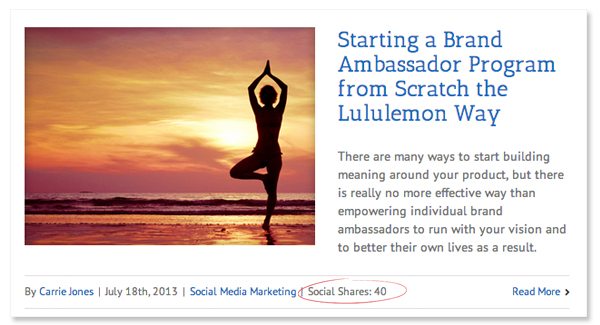
What can social data tell us about virality?
According to Mashable, quite a bit. That’s why they’ve integrated the Velocity algorithm not just into their site, but into a brand new native Android app. As a recent post describes, “Velocity scours the social web, collecting lots and lots of data around how people engage with published articles. It then pulls all of that data back to Mashable, dumps it into our own predictive engine, and forecasts which articles are about to go viral.”
This virality prediction isn’t just for fun; Mashable uses it to determine which articles land where on their homepage. Basically, it’s a guarantee that the most liked/tweeted/shared posts are the most visible pieces of content, at all times. The new Android app takes it one step further, and will actually ping users — sending app users a push notification — when the algorithm predicts that a story is about to “go viral”. Long story short, if a Mashable story is popular in the social space, readers will be hard-pressed to miss it.
The Social Snowball Effect
Putting the most popular content front and center is a pretty logical move for any publication — it’s front page strategy for the Internet era. What’s revolutionary here is that Mashable is basing this algorithm exclusively on social data — and according to a new study from MIT, they’re onto something. Data shows that “early positive recommendations for articles lead to more likes and upvotes.” In other words, likes beget more likes, tweets beget more tweets, and so on and so forth.
Mashable clearly dedicated entire teams and budgets to build and integrate the Velocity algorithm, but your brand can take advantage of the social snowball effect, too. The first step is to weave social proof into your content at every opportunity, including the homepage and individual articles. If people are engaging with your content, don’t be afraid to put those numbers on display.
On lonelybrand, we baked social counts into our new responsive redesign. You’ll see these numbers on our homepage, as well as a network by network breakdown at the top of each individual article.

Widgets with “most shared” articles can also communicate that social proof — see the below example in the side column of the Netcredit blog. People can see the freshest content in the main column, but they can also see the articles that are being shared the most, thanks to a custom-built algorithm. If we take MIT’s psychology learnings to heart, there’s a good chance that readers will see these socially-endorsed articles and not only click, but give them the digital thumbs up, too.
